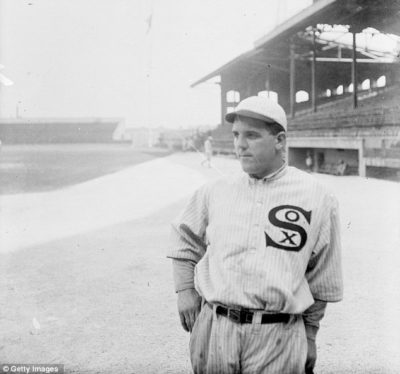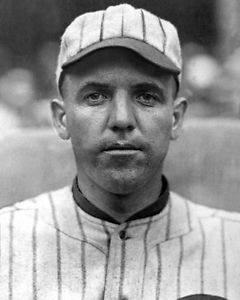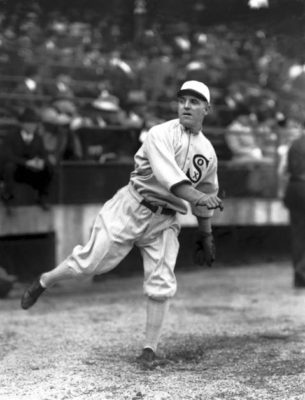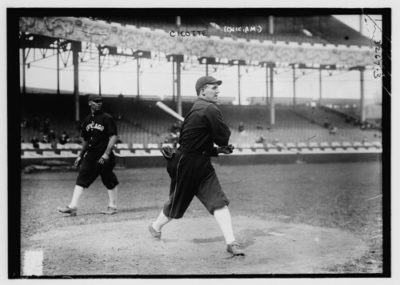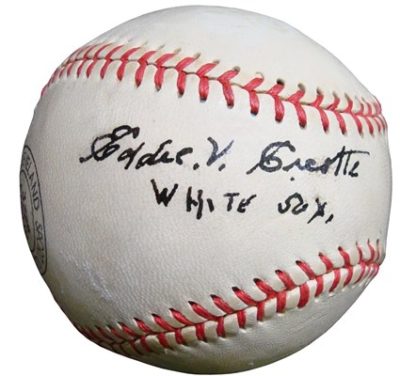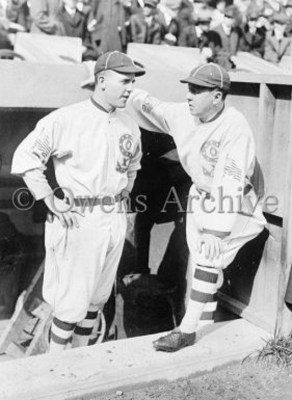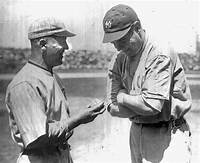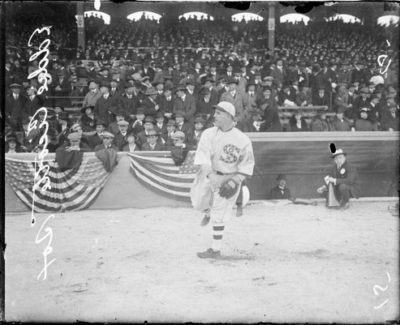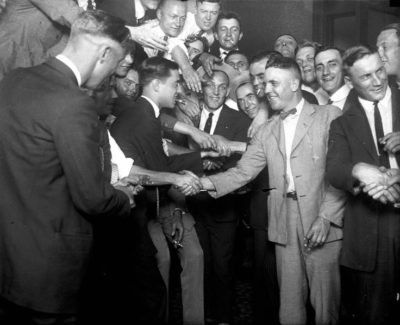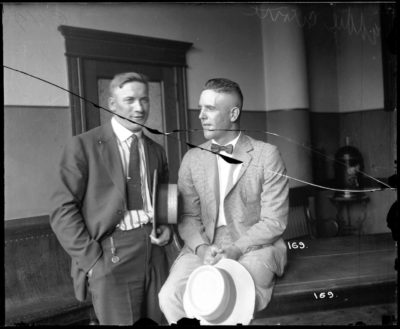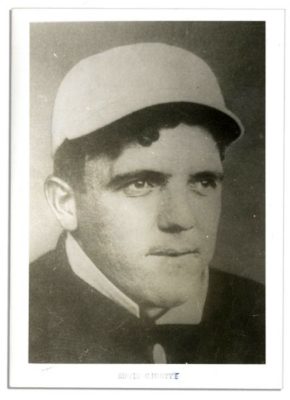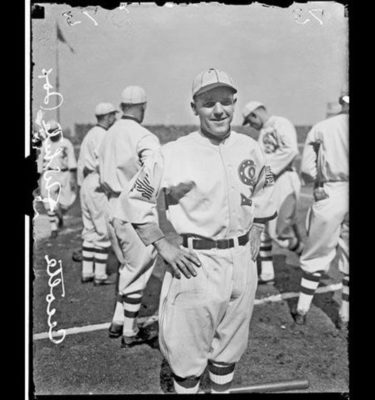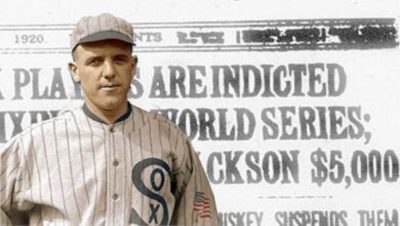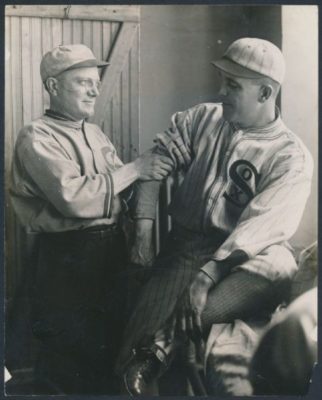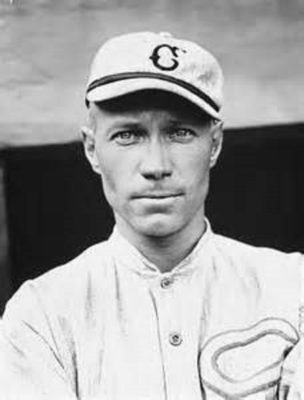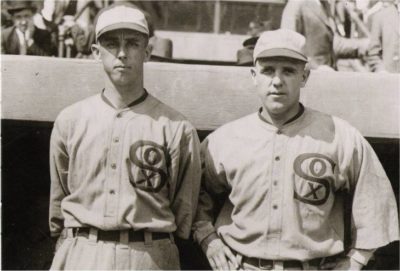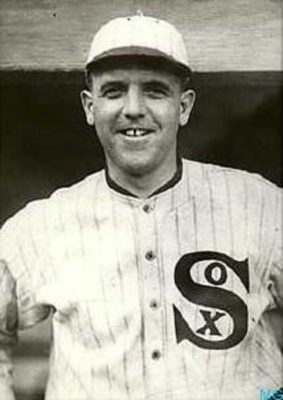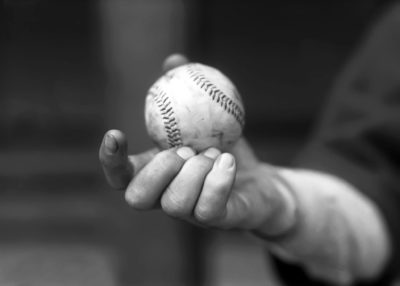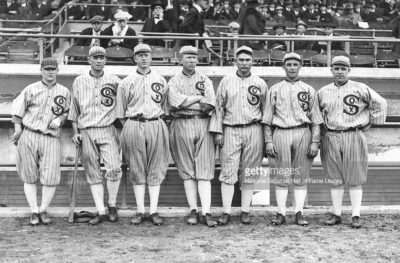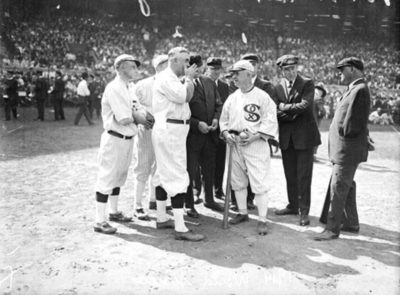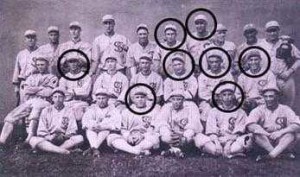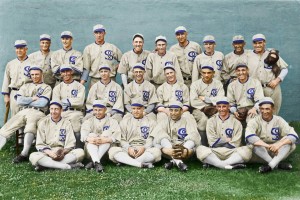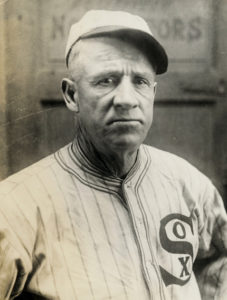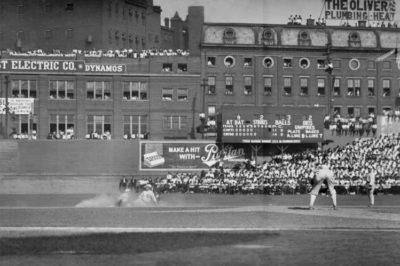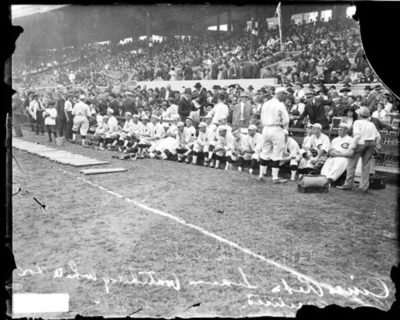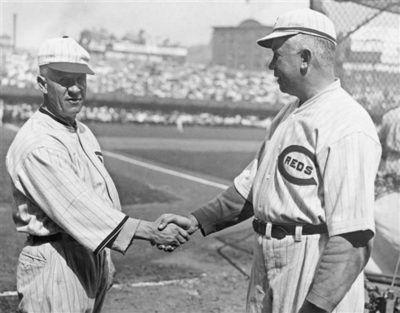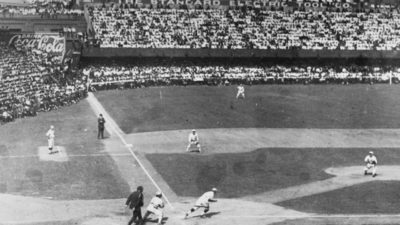Baseball History Comes Alive Now Ranked #2 by Feedspot Among All Internet Baseball History Websites and Blogs!
Guest Submissions from Our Readers Always Welcome!
Subscribe to Old Baseball Photos and Essays for automatic updates (sign-up block found in right side-bar)
As a Free Bonus for subscribing, you’ll get instant access to my two Special Reports: Memorable World Series Moments and Gary’s Handy Dandy World Series Reference Guide!
Eddie Cicotte Photo Gallery
Click on any image below to see photos in full size and to start Photo Gallery:
Spotlight on the “Eight Men Out,” Part Three: Eddie Cicotte
With the 100th anniversary of the Black Sox scandal fast approaching, I’m going to continue with my series on the “Eight Men Out.” Today, we’ll take a look at the career of pitcher Eddie Cicotte, with a beautiful featured photo of Eddie colorized by our resident baseball artist, Don Stokes.
“I admit I did wrong, but I’ve paid for it the past 45 years.” -Eddie Cicotte, commenting in a 1965 interview on his role in the 1919 Black Sox scandal.
Shop MLB.com. The Official Online Shop of Major League Baseball.
Eddie “Knuckles” Cicotte may be the most recognizable of the “Eight Men Out” after “Shoeless” Joe Jackson. His quote, “I did it for the wife and kiddies,” is the second-most famous line associated with the scandal, right after, “Say it ain’t so, Joe…”
Knuckleball specialist Eddie Cicotte pitched in the major leagues for 14 seasons. Over his career, he compiled a 208-149 record, with a 2.38 ERA, 249 complete games, and 35 shutouts, pitching for the Tigers, Red Sox, and White Sox. Sadly, had the scandal not terminated his career, Eddie may have made it to the Hall of Fame.
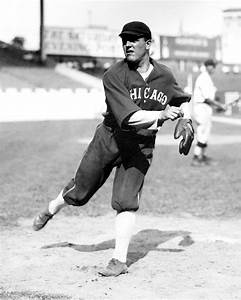
Eddie Cicotte’s Career
Eddie is also recognized as the first major leaguer to master the knuckleball. According to one description, “Eddie gripped the knuckler by holding the ball on the three fingers of a closed hand, with his thumb and forefinger to guide it, throwing it with an overhand motion, and sending it from his hand as one would snap a whip.”
Eddie made his big-league debut on September 3, 1905 with the Tigers. After a 3-year stint in the minors, he resurfaced with the Red Sox where he compiled a 41–48 record from 1908 to 1912. The Red Sox sold him to the White Sox on July 22, 1912.
He had a breakout year in 1913, going 18–12 with a 1.58 ERA. He topped these numbers with a great year in 1917 when he led the league in wins (28), ERA (1.53), and innings pitched (346). Eddie won Game One of the 1917 World Series, lost Game Three, and pitched six innings of relief in Game Five. Injuries reduced him to a 12–19 record in 1918; but in 1919 he rebounded to an outstanding 29-7 record (.800) and again led the league in wins, winning percentage (.806), innings pitched (306), and complete games (30).
The 1919 World Series
Eddie reportedly resisted repeated attempts by Chick Gandil to join in the plot to throw the 1919 World Series until just days before the series opened. He pitched in three games, winning one, but pitching ineffectively and lost the other two. Probably the most famous pitch he ever threw was the one that nailed Cincinnati Reds leadoff man Morrie Rath squarely in the back to lead off the 1919 World Series – a pitch that signaled to the gamblers that the fix was on.
Eddie Cicotte was the first of the eight players to come forward admitting guilt, signing a confession and a waiver of immunity. He later recanted this confession and was acquitted of all charges at the jury trial. But the joy was short lived, as Judge Landis permanently banned Eddie and the seven other Black Sox for life.
Eddie’s Life After Baseball
After the scandal, Eddie returned to Livonia, Michigan, where he managed a service station and later became a game warden. He also worked for Ford Motor Company, retiring in 1944. At the time of his death on May 5, 1969 at age 84, he was a strawberry farmer in Farmington, Michigan. In an interview in 1965, he said he lived his post-baseball life quietly. He agreed that he had made mistakes, but insisted that he had tried to make up for it by being a good husband and father, and living as clean a life as he could after baseball.
We’re all responsible for the decisions we make in life – some of them better than others. Unfortunately, Eddie Cicotte made a bad one back in 1919; and he had to live with the consequences for the rest of his life.
-Gary Livacari
Photo Credits; The Charles Conlon Baseball Collection; and Public Domain; Eddie Cicotte Colorization by Don Stokes
Information: Excerpts edited from the Eddie Cicotte SABR biography by Jim Sandoval; and from the Eddie Cicotte Wikipedia page.
Check out my two books, both now available on Amazon in e-book and paperback: “Paul Pryor in His Own Words: The Life and TImes of a 20-Year Major League Umpire”and “Memorable World Series Moments.” All profits go to the Illinois Veterans Foundation
We are a participant in the Amazon Services LLC Associates Program, an affiliate advertising program designed to provide a means for us to earn fees by linking to Amazon.com and affiliated sites. Click here to view Amazon’s privacy policy


